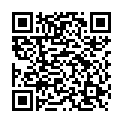|
|
|
| Module code: KI865 |
|
4V (4 hours per week) |
|
5 |
| Semester: 3 |
| Mandatory course: no |
Language of instruction:
English |
Assessment:
180-minute written exam
[updated 02.07.2007]
|
KI865 Computer Science and Communication Systems, Master, ASPO 01.04.2016
, semester 3, optional course, telecommunications-specific
|
60 class hours (= 45 clock hours) over a 15-week period.
The total student study time is 150 hours (equivalent to 5 ECTS credits).
There are therefore 105 hours available for class preparation and follow-up work and exam preparation.
|
Recommended prerequisites (modules):
None.
|
Recommended as prerequisite for:
|
Module coordinator:
Prof. Dr. Horst Wieker |
Lecturer:
Prof. Dr. Horst Wieker
Dipl.-Ing. Harald Krauss
[updated 01.04.2003]
|
Learning outcomes:
The aim of this module is to show students the potential behind network convergence (voice, data, etc.) and to illustrate how and with what interfaces and protocols network convergence can be realized.
[updated 02.07.2007]
|
Module content:
1. Introduction: network evolution
1.1......Conventional network concepts
1.2......Telephony networks
1.3......Mobile networks
1.4......Internet
2. Quality of Service
2.1......ITU specifications
2.2......Architecture and protocols
3. The IETF architecture and its protocols
3.1......Examples of convergence
3.2......Soft switching
3.3......Private networks
4. Services
4.1......Intelligent networks and the internet
4.2......Authentication, authorization and accounting
4.3......RADIUS, DIAMETER and COPS
[updated 02.07.2007]
|
Recommended or required reading:
SIGMUND G., Next Generation Networks
FORD M., LEW K., et al, Handbuch Netzwerk-Technologien. Komplettes Grundwissen für Internetworking und Networking. Markt&Technik, 1998
[updated 02.07.2007]
|
Module offered in:
SS 2008,
SS 2007,
SS 2006,
SS 2005
|


